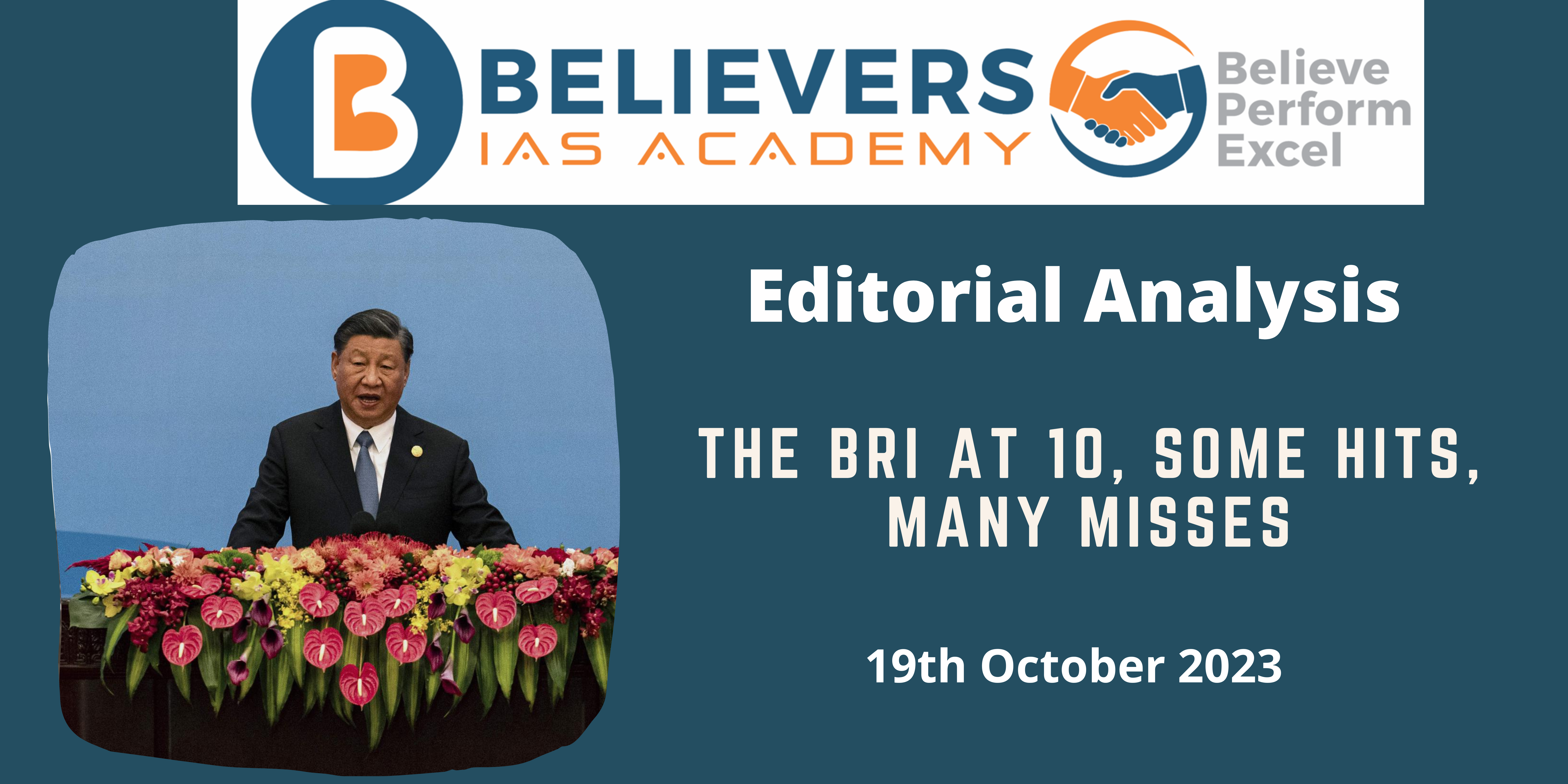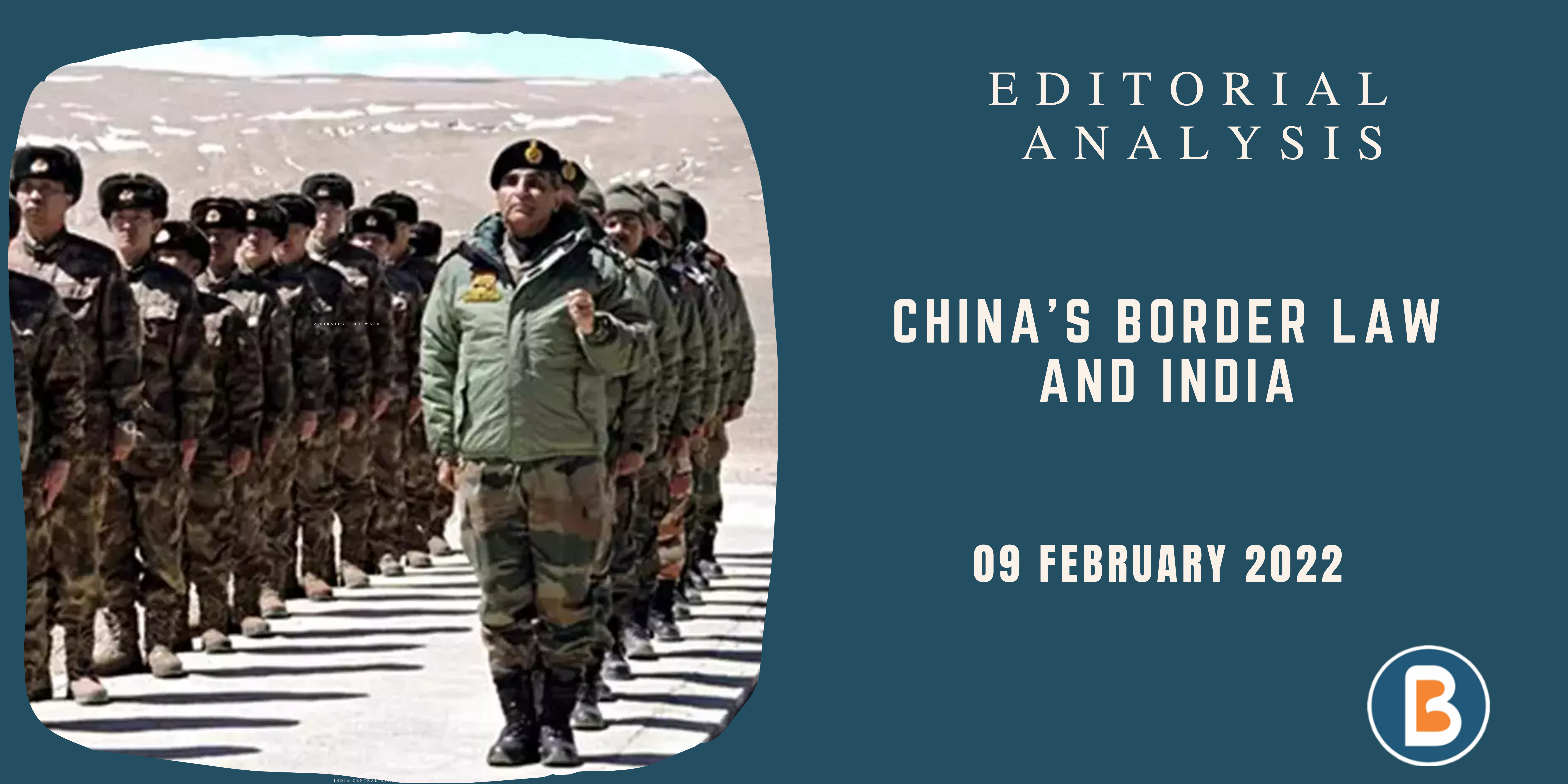The BRI at 10, some hits, many misses
Context:
The Third Belt and Road Forum for International Cooperation recently took place in Beijing, China, from October 17-18, reigniting discussions about Chinese President Xi Jinping’s Belt and Road Initiative (BRI).
Background:
- This initiative, often likened to China’s version of the Marshall Plan, symbolizes China’s ambition to evolve from a regional power to a global force. China recognized the need to establish new transport and trade routes to reduce its reliance on the vulnerable Strait of Malacca.
- Additionally, China created the Asian Infrastructure Investment Bank (AIIB) with a substantial $100 billion fund to challenge other lending institutions. The AIIB supports the early objectives of the BRI. President Xi aimed to promote the use of local currency in trade, reducing reliance on the U.S. dollar and positioning China as an economic hub.
- The BRI not only projected China’s global influence but also served as a vehicle for President Xi to establish himself as a global statesman. It became a significant part of the Communist Party of China’s constitution and the 14th Five-Year Plan. The Chinese government’s white paper on the BRI highlighted that over 200 BRI cooperation agreements had been signed with over 150 countries, and the total two-way investment between China and partner nations from 2013 to 2022 amounted to $380 billion. President Xi emphasized the initiative’s potential to address global infrastructure deficits, including the lack of electricity, clean water, and broadband access affecting millions.
Relevance:
GS – 02, GS – 03(Infrastructure, Groupings & Agreements Involving India and/or Affecting India’s Interests) (Bilateral Groupings & Agreements)
Prelims:
Belt and Road Initiative (BRI), China-Pakistan Economic Corridor (CPEC)
Mains Question:
Critically assess the Belt and Road Initiative (BRI) and its implications for global infrastructure development and China’s geopolitical influence. (150 words)
Dimensions of the Article:
- Understanding the Belt and Road Initiative (BRI)
- Controversies and Challenges
- Global Responses and Alternatives
- India’s Stance and Concerns
Understanding the Belt and Road Initiative (BRI)
The BRI, often compared to the Marshall Plan, marks China’s aspiration to elevate itself to a global powerhouse from a regional player. It seeks to establish alternative trade routes to reduce dependency on the vulnerable Strait of Malacca, a critical economic lifeline.
- The Asian Infrastructure Investment Bank (AIIB), endowed with a substantial $100 billion fund, aligns with the early goals of the BRI. This financial institution enables China to promote local currency in trade and challenge the dominance of the U.S. dollar.
- The BRI serves as a tool for President Xi to establish his image as a global statesman and extend China’s influence worldwide.
- Its inclusion in the Communist Party of China’s constitution and the 14th Five-Year Plan underscores its political importance.
- The BRI aims to bridge the vast global infrastructure gap by investing in motorways, power plants, ports, railway networks, and digital infrastructure.
- The World Bank estimates that approximately $1.5 trillion annually through 2030, or 4.5% of the GDP of low- and middle-income countries, is required to close this gap.
Controversies and Challenges:
- The BRI faces various criticisms and challenges- ecological damage, displacement of local populations, disputes over compensation, and labor unrest.
- Case studies from countries like Indonesia, Laos, and Pakistan reveal complex issues undermining the BRI’s ‘win-win cooperation’ tagline.
Global Responses and Alternatives:
- The “United States-Japan infrastructure investment alternatives” during the Trump era and the ‘Build Back Better World‘ initiative under the Biden administration has tried to counter the BRI.
- These initiatives aim to channelize private capital into areas like climate change, energy security, health care, digital technology, and gender equity.
India’s Stance and Concerns:
- India has constantly opposed the China-Pakistan Economic Corridor (CPEC) due to sovereignty issues and concerns about unsustainable debt.
- India’s stance hasn’t impacted the BRI’s narrative, emphasizing the challenges of convincing international partners.
- The G-20 Delhi summit presented an alternative in the form of the India-Middle East-Europe Corridor (IMEC), which seeks to connect India, West Asia, and Europe through railways, shipping lines, and infrastructure projects, including clean hydrogen export pipelines.
Conclusion:
- China’s aspirations to become a global powerhouse through the BRI have gained momentum, but they also face growing skepticism. The key lies in balancing infrastructure development with environmental sustainability, ensuring local communities benefit, and upholding the principle of ‘win-win cooperation.’
- The future of the BRI remains a topic of great interest as China navigates economic challenges and seeks to reinvigorate this ambitious “project of the century.”




